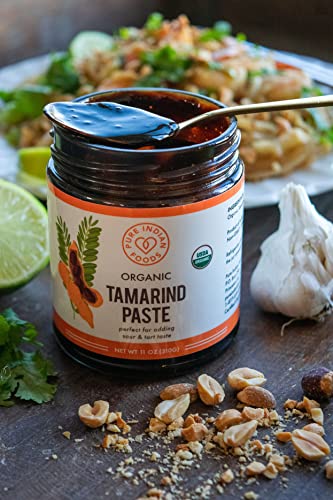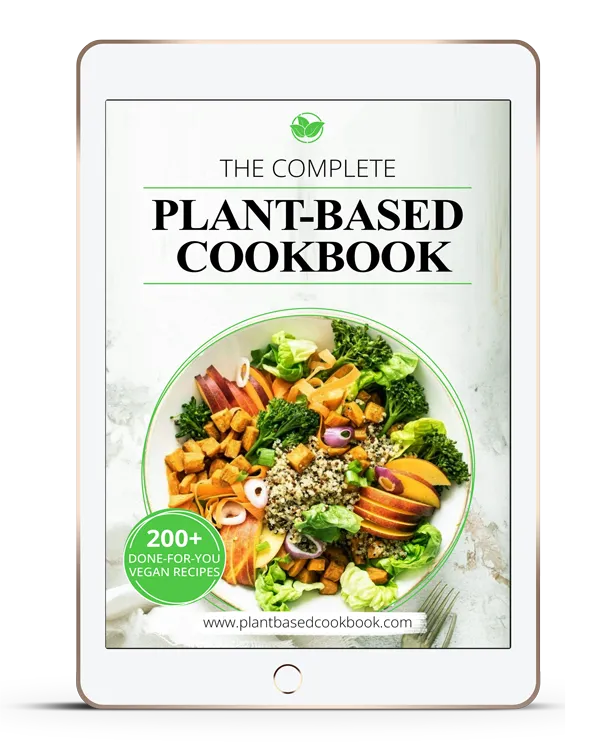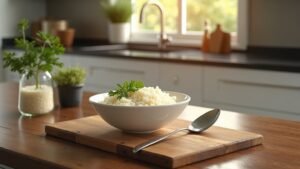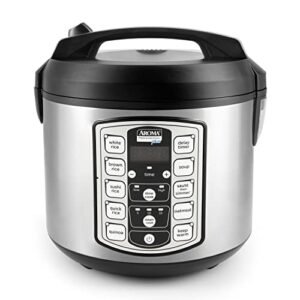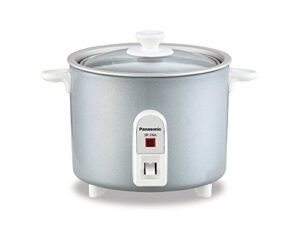Craving a taste of Thailand? In this article, we will take a journey into the world of one of Thailand’s most beloved dishes: pad Thai rice noodles. With our collection of delicious recipes, you’ll learn how to create flavorful stir fries using soy sauce and firm tofu.
So let’s get ready to embark on a culinary adventure cooking perfect pad Thai rice noodles in a rice cooker that are filled with mouthwatering recipes that showcase the perfect balance of sweet, sour, and savory flavors.
This versatile dish offers endless options for customization. Whether you prefer shrimp, chicken, tofu, or just vegetables, pad Thai rice noodles with soy sauce can accommodate your cravings. These delicious noodles can be used in a variety of recipes, including soups and stir-fries. You can find them in many restaurants that serve Asian cuisine. With its quick and easy preparation, you’ll have a delicious meal of fresh rice noodles with chicken in soups and soy sauce on the table in no time.
So, if you’re looking to master the art of cooking authentic pad Thai rice noodles with flavorful chicken at home and impress your family and friends with the caramelization of the ingredients, this is the cookbook for you. Get ready to tantalize your taste buds with each bite of delicious chicken pad Thai rice noodles, as we explore the vibrant world of caramelization at home. Don’t miss out on this new and exciting culinary adventure!
Table of Contents
ToggleKey Tips for Perfectly Cooked Rice Noodles
Soak noodles in hot water before cooking
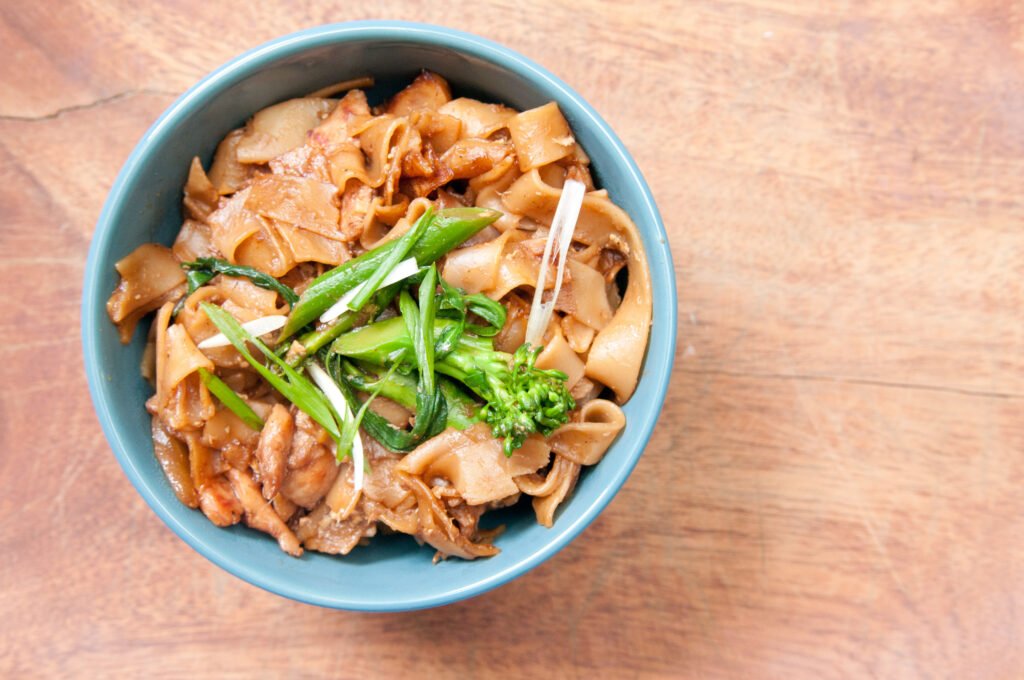
To achieve a perfectly cooked chicken pad see ew, it’s essential to start with the right preparation of rice noodles. Before cooking, soak the noodles in hot water. This step helps soften the fresh rice noodles and ensures they cook evenly, preventing noodle breakage. To make pad see ew, simply place the dried rice noodles in a bowl and cover them with hot water. Let the pad see ew noodles soak for about 10-15 minutes until they become pliable but still slightly firm to the touch, to prevent any noodle breakage.
Don’t overcook the noodles; they should be slightly firm
Timing is crucial. It’s important not to overcook pad thai as it can quickly turn mushy and lose its texture. Follow the instructions on the package for an estimated cooking time, but keep an eye on them as they cook. The ideal consistency for pad thai is when the noodles are slightly firm or al dente when you bite into them.
Rinse cooked noodles with cold water to prevent sticking
Once your rice noodles have reached the desired level of doneness, drain them and rinse them immediately with cold water. Rinsing the noodles with cold water halts the cooking process and helps remove excess starch from their surface. This step prevents the noodles from sticking together while you prepare your dish.
Toss noodles with oil to keep them from clumping together
Here’s a top tip! To further ensure that your noodles remain separate and don’t clump together, toss them gently with a little bit of oil after rinsing with cold water. The oil coats each strand of pad thai noodle, creating a barrier that prevents sticking or clumping during storage or when added to stir-fries or other dishes.
By following these key tips, you’ll be well on your way to perfectly cooked pad Thai rice noodles every time!
Easy Homemade Pad Thai Recipe
If you’re craving a delicious and satisfying meal that’s quick and easy to make, then I have a great homemade Pad Thai recipe that I know you will love. With just a few simple ingredients, you can whip up a mouthwatering dish that will impress your friends and family.
Simple recipe using common ingredients
The best part about making Pad Thai at home is that you don’t need any fancy or hard-to-find ingredients. Most of the items required for this recipe can be found in your pantry or local grocery store. All you need are rice noodles, eggs, protein (such as shrimp or chicken), bean sprouts, green onions, peanuts, lime juice, fish sauce, sugar, and some oil for cooking.
Customize the recipe based on personal preferences
Another great thing about this Pad Thai recipe is its versatility. You can easily customize it to suit your taste buds and dietary preferences. If you’re a fan of spicy food, add some chili flakes or Sriracha sauce for an extra kick. Vegetarians can skip the protein and add tofu or extra veggies instead. So, feel free to experiment with different toppings like cilantro or crushed peanuts to enhance the flavors even more.
Ready in under 30 minutes
Time is of the essence. The good news is that this homemade Pad Thai recipe can be prepared in under 30 minutes! The key is prepping all your ingredients beforehand so that everything comes together quickly when it’s time to cook. Soak the rice noodles while you chop your vegetables and whisk together the sauce. Once everything is ready, it’s just a matter of stir-frying and assembling all the components.
A delicious balance of flavors
Authentic Pad Thai is known for its perfect balance of sweet, sour, salty, and savory flavors. The combination of tamarind paste, lime juice, fish sauce, and sugar creates a tantalizing taste that will leave you craving for more. The noodles soak up the sauce, while the protein, bean sprouts, and green onions add texture and freshness to every bite. Don’t forget the crushed peanuts on top for that extra crunch!
Ingredients for Delicious Pad Thai Sauce
Tamarind Paste Adds Tanginess
Tamarind paste is a key ingredient in making delicious Pad Thai sauce. It adds a tangy flavor that gives the dish its signature taste. The paste is made from the pulp of tamarind fruit, which has a naturally sour taste. When combined with other ingredients in the sauce, it creates a perfect balance of flavors.
Fish Sauce Provides Umami Flavor
Another essential ingredient in Pad Thai sauce is fish sauce. This savory condiment adds depth and umami flavor to the dish. Made from fermented fish, it may sound strange at first, but trust me, it’s what gives Pad Thai that unique and irresistible taste. Just a small amount of fish sauce goes a long way toward enhancing the overall flavor profile.
Palm Sugar Brings Sweetness to Balance the Dish
To balance out the tanginess and umami flavors, palm sugar is added to the Pad Thai sauce. This natural sweetener derived from palm trees brings a touch of sweetness without overpowering the other flavors. It helps create that harmonious blend of sweet and savory tastes that makes Pad Thai so delightful.
Lime Juice Adds Refreshing Citrus Taste
Lime juice plays an important role in brightening up the flavors of Pad Thai sauce. It adds a refreshing citrus taste that cuts through the richness of other ingredients. Just a squeeze of fresh lime juice can elevate your homemade Pad Thai to another level, giving it that zesty kick.
When preparing your own homemade Pad Thai sauce, remember to use these four key ingredients: tamarind paste for tanginess, fish sauce for umami flavor, palm sugar for sweetness, and lime juice for refreshing citrus notes. Each ingredient plays a crucial role in creating that perfect balance of flavors that makes Pad Thai so addictive.
So next time you’re craving some mouthwatering Pad Thai noodles, make sure you have these essential ingredients on hand. With a little bit of practice and the right combination of flavors, you’ll be able to whip up a delicious plate of Pad Thai that rivals your favorite restaurant’s version.
Step-by-Step Guide to Making Pad Thai Sauce
To make a delicious pad thai sauce, follow these simple steps:
Mix tamarind paste, fish sauce, palm sugar, and lime juice together
Start by combining tamarind paste, fish sauce, palm sugar, and lime juice in a bowl. Tamarind paste adds a tangy flavor to the sauce, while fish sauce provides a savory umami taste. Palm sugar adds sweetness and balances out the other flavors, while lime juice gives it a refreshing zing.
Cook the mixture until it thickens slightly
Transfer the mixture to a small saucepan and cook it over low heat. Stir continuously until the ingredients are well combined and the sauce starts to thicken slightly. This process helps to develop the flavors and ensures that all the ingredients blend together perfectly.
Allow the sauce to cool before using
Once your pad thai sauce has reached the desired consistency, remove it from heat and let it cool down completely. Allowing it to cool will give time for the flavors to meld together even further. It’s important not to rush this step as it contributes significantly to the overall taste of your dish.
Stir well before adding it to your pad thai
Before adding your homemade pad thai sauce to your noodles or stir-fry, give it a good stir. This will help distribute any settled ingredients evenly throughout the sauce and ensure that every bite is bursting with flavor.
Now that you have mastered making pad thai sauce from scratch, you can use this versatile condiment in various dishes. Whether you’re making traditional pad thai with rice noodles or experimenting with different stir-fries or noodle dishes, this homemade sauce will elevate your culinary creations.
Remember that practice makes perfect! Don’t be discouraged if your first attempt doesn’t turn out exactly as you envisioned. Cooking is an art form that requires experimentation and personalization. Feel free to adjust ingredient quantities according to your taste preferences and make the sauce your own.
By following this step-by-step guide, you’ll be able to create a delicious pad thai sauce that will impress your family and friends. So, put on your chef’s hat and get ready to embark on a flavorful culinary adventure!
Mastering the Art of Making Pad Thai
Balance Flavors for the Perfect Bite
Achieving the perfect balance of flavors is key. You want your dish to be a harmonious blend of sweet, sour, salty, and spicy. Adjusting the ingredients as needed will help you achieve this balance.
- Use tamarind paste to add a tangy and slightly sour taste.
- Palm sugar can be added for sweetness.
- Fish sauce or soy sauce provides the necessary saltiness.
- Red chili flakes or fresh chilies give that desired kick of spiciness.
Quick Tossing for Optimal Results
To create an authentic pad thai dish with delightful textures and flavors, it’s essential to toss the ingredients quickly over high heat. This method ensures that each ingredient cooks evenly and retains its distinct taste.
- Heat up your wok or pan until it’s smoking hot.
- Add oil and let it heat for a minute.
- Throw in your choice of protein (such as shrimp or chicken) and cook until done.
- Push the protein aside and crack an egg into the pan, scrambling it quickly.
- Add in your soaked rice noodles along with bean sprouts and green onions.
- Use a spatula to toss everything together vigorously for a few minutes.
Achieving Caramelization on Noodles
One hallmark of well-made pad thai is achieving a slight caramelization on the noodles, which adds depth of flavor and texture to the dish. Follow these steps to achieve that desirable caramelization:
- Make sure your pan or wok is hot enough before adding any ingredients.
- Spread out the rice noodles evenly across the surface area of the pan.
- Let them cook undisturbed for a couple of minutes until they start sticking to the pan slightly.
- Flip them over using tongs or a spatula, allowing the other side to cook and caramelize as well.
- Repeat this process a few times until you achieve the desired texture and color.
Garnishing for Texture and Freshness
To elevate your pad thai dish, don’t forget to garnish it with crushed peanuts and fresh herbs. This adds both texture and freshness to the final dish.
- Crushed peanuts provide a crunchy element that complements the soft noodles.
- Fresh herbs like cilantro or Thai basil add a burst of vibrant flavor.
Now that you’ve learned some key tips for cooking pad thai rice noodles, it’s time to put them into practice! Experiment with different ingredients and flavors to find your own signature pad thai recipe. Remember, mastering the art of making pad thai takes practice, so don’t be discouraged if your first attempt isn’t perfect. With time and experience, you’ll become an expert in creating this delicious Thai dish!
A Flavorful Combination: Frying Rice Noodles with Pad Thai Sauce
To create a mouthwatering plate of Pad Thai, it’s crucial to know how to cook the rice noodles perfectly and combine them with the delectable flavors of the Pad Thai sauce. Here are some tips to help you achieve that perfect balance of flavors in your fried rice noodles:
Coat cooked rice noodles evenly with pad thai sauce
Once you have cooked your rice noodles according to the package instructions, it’s time to coat them in the tantalizing flavors of the Pad Thai sauce. Pour the sauce over the cooked noodles and toss them gently to ensure every strand is coated evenly. This step is essential as it ensures that each bite is bursting with flavor.
Stir-fry noodles until they absorb all the flavors
After coating the rice noodles with the Pad Thai sauce, it’s time to stir-fry them. Heat a wok or a large frying pan over medium-high heat and add a bit of oil. Once hot, add the saucy noodles and start stirring continuously. The goal here is for the noodles to absorb all those delicious flavors from the sauce while developing a slightly charred and smoky taste.
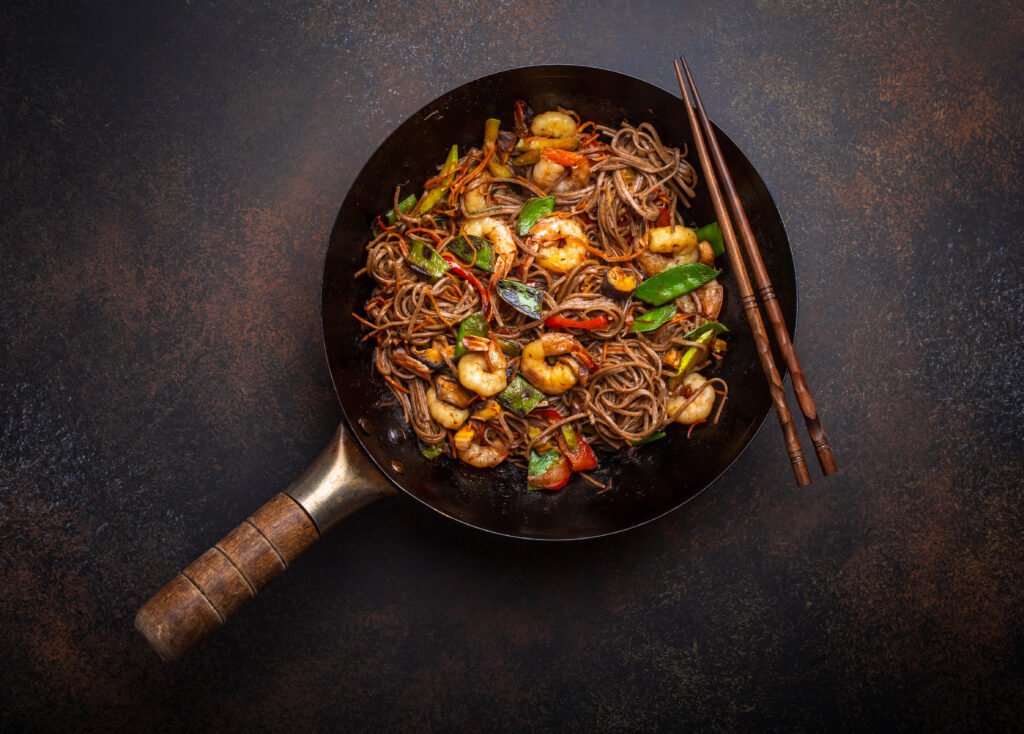
The sauce should coat each noodle strand perfectly
As you stir-fry the rice noodles, pay close attention to ensure that every single strand gets coated with the Pad Thai sauce. You don’t want any plain or bland bites! Keep tossing and flipping those noodles so that each one gets its fair share of flavor.
Avoid overcrowding the pan for better frying results
One common mistake when cooking fried rice noodles is overcrowding the pan or wok. It’s important to give each noodle enough space to fry properly without sticking together or becoming mushy. If necessary, cook in batches rather than trying to fit everything into one pan.
When cooking pad thai rice noodles:
- Do coat cooked rice noodles evenly with pad thai sauce.
- Do stir-fry noodles until they absorb all the flavors.
- Do ensure that the sauce coats each noodle strand perfectly.
- Don’t overcrowd the pan for better frying results.
By following these simple tips, you can achieve a plate of Pad Thai rice noodles that is bursting with flavor and has the perfect balance of sweet, salty, and tangy notes. So grab your wok and get ready to create a delicious masterpiece!
Enjoy Your Homemade Pad Thai Rice Noodles
Congratulations on completing all the sections before reaching this conclusion! By now, you should have a good understanding of how to cook delicious pad thai rice noodles from scratch. You’ve learned key tips for perfectly cooked rice noodles, discovered an easy homemade pad thai recipe, and mastered the art of making the flavorful pad thai sauce.
Now it’s time to put your newfound knowledge into action and enjoy the fruits of your labor. Whip up a batch of homemade pad thai using the techniques and recipes you’ve learned. The satisfaction of creating a delicious dish from scratch is truly unparalleled. So gather your ingredients, fire up your stove, and get ready to indulge in a plateful of mouthwatering pad thai rice noodles!
Frequently Asked Questions (FAQs)
Can I use other types of noodles instead of rice noodles?
Yes, if you don’t have rice noodles on hand or prefer a different texture, you can substitute them with other types of noodles like linguine or spaghetti. Just keep in mind that the taste and texture may vary slightly from traditional pad thai.
How do I store leftover pad thai rice noodles?
To store leftover pad thai rice noodles, transfer them to an airtight container and refrigerate for up to 3 days. When reheating, sprinkle some water on top before microwaving or gently stir-fry them in a pan with a little oil.
Can I make vegetarian or vegan pad thai?
Absolutely! Pad Thai can be easily customized to suit dietary preferences. For vegetarian options, omit meat and add more vegetables like tofu, mushrooms, or bell peppers. To make it vegan-friendly, ensure that all the ingredients used are free from animal products such as fish sauce or eggs.
What can I serve with my homemade pad thai?
Pad Thai pairs well with various side dishes such as fresh lime wedges for added tanginess, crushed peanuts for extra crunch, and a side of Thai-style salad or spring rolls to complement the flavors.
Can I adjust the spiciness level of pad thai?
Yes, you can easily adjust the spiciness level of your pad thai by adding more or less chili sauce or chili flakes according to your taste preferences. Remember to start with a small amount and gradually increase it until you reach your desired level of heat.


